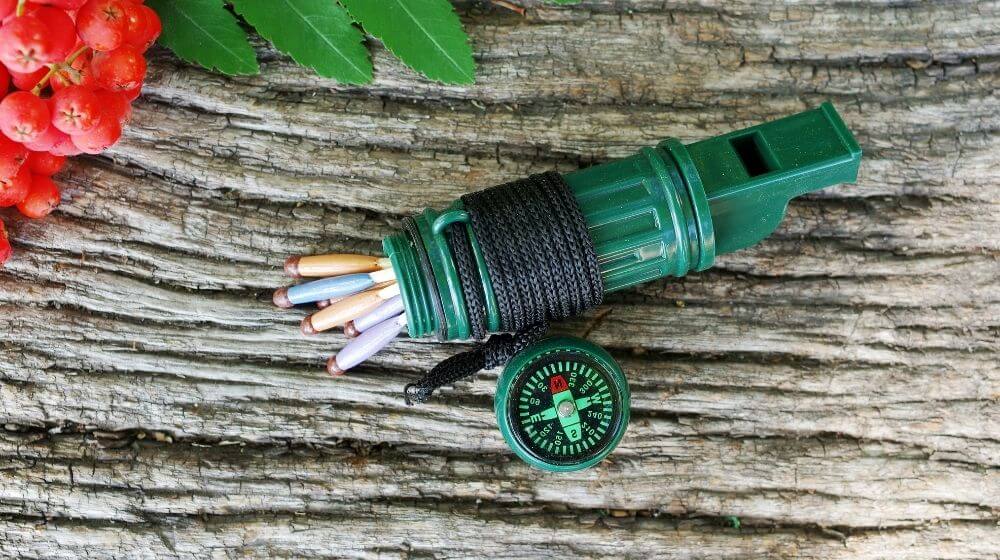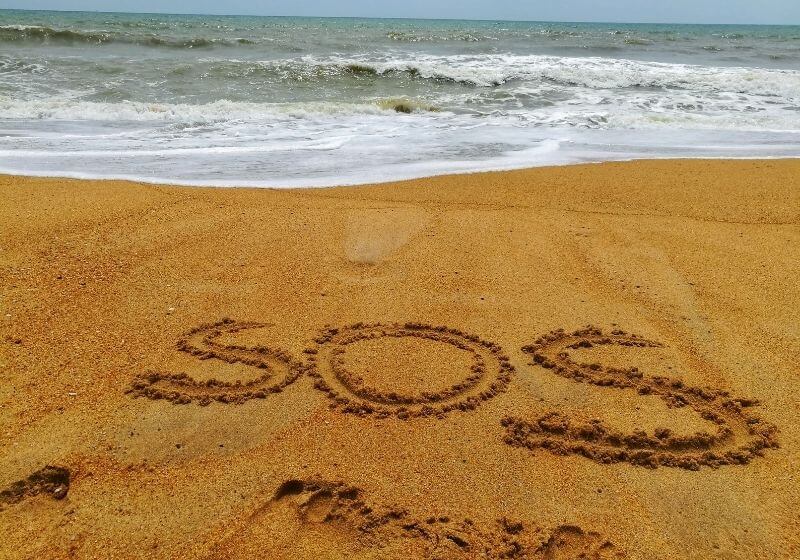Survival Gear
How To Whistle: Signal Whistle Codes You Need To Know

Knowing how to whistle when in distress can make the difference between life and death. To make sure you pass the right message across, here is a detailed guide on how to whistle for survival.
RELATED: 9 Must-Haves For Your EDC Kit
How to Whistle Signal Codes for Survival
How to Whistle the 3-Blasts Distress Call

What You’ll Need
- A plastic or metallic whistle
Instructions
1. Hold the whistle to your mouth and blow three loud but short blasts. Keep in mind that each should last roughly three seconds as this is the universally recognized duration.
2. To perfectly execute this, count up to three in your head while blowing the whistle to ensure that each blast lasts approximately three seconds.
3. Once you have completed the three blasts pattern, give yourself a few seconds before repeating it as many times as you need to give yourself a chance to catch someone’s attention.
Tips
- Catch a breath or two after each successful blast to rest and allow the sound enough time to travel.
- Consequently, not taking enough time between blasts will lead to the sounds overlapping, making it hard for your call to be interpreted as a distress call.
- Also, be keen on how you execute the three-blasts pattern. It should be clear enough that anyone who hears it can recognize it as a distress call.
RELATED: Survival Signal Mirror | How Does It Work?
How to Whistle the SOS Signal Call

What You’ll Need
- A plastic or metallic whistle
Instructions
1. Firstly, understand that the SOS signal visually translates as three dots, three dashes followed by three more dots in the Morse Code.
2. Next, translate the Morse Code using your survival whistle. Since the dots translate to short and sharp whistle bursts roughly one second long, replicate that with your whistle.
Give each burst at least a second to travel to avoid overlapping.
3. Secondly, replicate the three dashes that translate to longer whistle bursts, each lasting up to three seconds long. Catch a breath between the bursts for the sound to travel.
4. Lastly, repeat the three one-second-long sharp bursts to complete the SOS signal pattern.
Trivia:
Besides asking for help, you can also use your signal whistle to communicate with someone who has gone missing or someone responding to your signal:
- One whistle burst translates to, “Where are you?”
- Two whistle bursts translate to “Come here.”
Pro Tips
- Always go for bright-colored whistles. They are easier to spot when accidentally dropped or misplaced.
- Similarly, choose whistles that are attached to rings, lanyards, or clips to prevent loss. Better yet, attach them to something you cannot easily misplace.
- Additionally, pea-less whistles are your best choice when in sub-freezing regions. Your spit can freeze and lock the cork ball, rendering it useless momentarily.
- What’s more, whistles are great signal devices to give to your kids as long as you instruct them on how to blow them.
- If you do not have a whistle, remember that three of anything – be it flashes of light, rifle shots, fires, or rock piles, is a universal distress signal.
- Also, in cases where you do not have a whistle, you can easily make one using a pocket knife and a three-to-five-inch hollow stick. The diameter of the hollow space should be a quarter inch.
Watch this video as Ezvid Wiki presents on the 10 best survival whistles 2020:
There you go, preppers. Even as an outdoor enthusiast, you cannot always rely on your voice, memory, or map reading skills when facing distress. Whistles are small survival gears that are convenient to carry around and can give you a fighting chance when lost outdoors.
What other tips would you like to share with us on this topic? Let us know in the comment section below!
Up Next:
- DIY Survival: How To Make A Crossbow From Scratch [Video]
- Top 7 Survival Watch You Need For Your Outdoor Adventure
- 10 Rabbit Hunting Tips For Beginners
Calling all preppers, craftsmen, bushmasters, outdoorsmen and all around skilled people, Survival Life needs YOU! Click here if you want to write for us.
Don’t forget to stay connected with us on Facebook, Twitter, Pinterest, and Instagram!
-

 Do It Yourself7 months ago
Do It Yourself7 months agoParacord Projects | 36 Cool Paracord Ideas For Your Paracord Survival Projects
-

 Do It Yourself9 months ago
Do It Yourself9 months agoHow To Make Paracord Survival Bracelets | DIY Survival Prepping
-

 Do It Yourself9 months ago
Do It Yourself9 months ago21 Home Remedies For Toothache Pain Relief
-

 Do It Yourself10 months ago
Do It Yourself10 months agoSurvival DIY: How To Melt Aluminum Cans For Casting
-

 Exports8 months ago
Exports8 months agoAre Switchblades Legal? Knife Laws By State


GranJan
May 4, 2021 at 11:30 AM
Issuing whistles to little kids when camping is essential! But, since kids are kids, they really want to blow the whistles all of the time. For the little ones in my care (less than 7 years old) we have a practice session at home where they can learn the proper SOS and how to make a loud whistle. Once we get to the mountains and are setting up our campsite, we let them blow their whistles again, just to get it out of their systems. After that point, the whistles are for emergencies only.
That was great for practice and learning. But we have needed that more than once. From a 5-year-old getting his line stuck in a tree (don’t ask me how)To a 15-year-old getting lost on his ATV, to Grandma needing somebody to carry lunch down to the lake. I love using our whistle system!